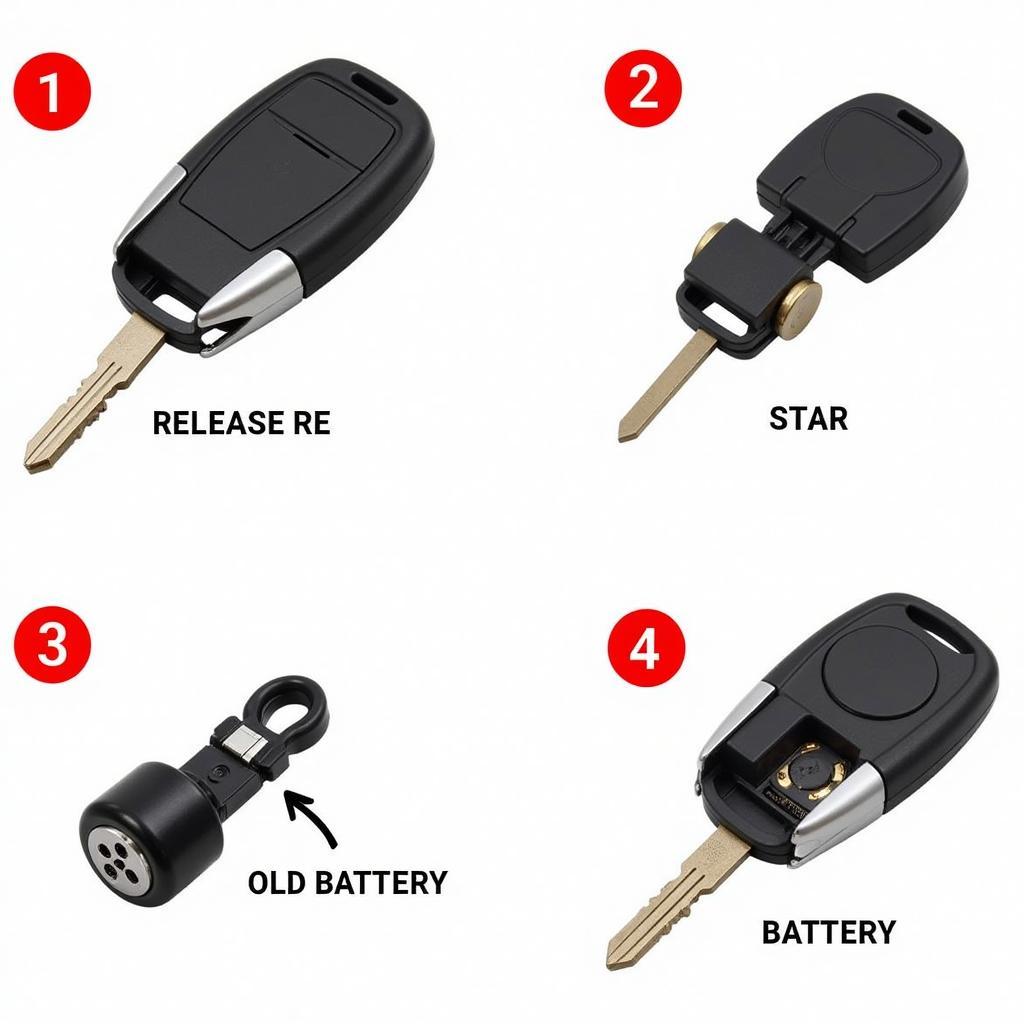Modern vehicles prioritize safety with features like seat belt warning sensors. These small but crucial components are part of the Supplemental Restraint System (SRS), working tirelessly to keep you safe. They detect when a seat belt is fastened and trigger an audible and visual warning if someone in the front seats hasn’t buckled up.
Over time, like any other part of your car, these sensors can malfunction. You might experience a persistent warning even when buckled up, no warning at all, or intermittent issues. This guide dives deep into the world of automotive replacement seat belt warning sensors, providing you with the knowledge to diagnose and potentially fix the issue.
Understanding Seat Belt Warning Sensors
Before we jump into troubleshooting, let’s understand how these sensors work. The most common type is a mechanical buckle switch. It’s a simple on/off switch activated when the metal tongue of the seat belt is inserted. When buckled, the circuit is closed, telling the SRS system that the seat belt is engaged.
Some vehicles utilize weight sensors in the passenger seat to detect if someone is occupying the seat and trigger the belt warning system. These sensors are more complex and often integrated into the seat’s structure.
Common Seat Belt Warning Sensor Problems
Here’s a rundown of the typical problems associated with faulty seat belt warning sensors:
- Continuous Warning Chime/Light: This is the most common symptom, often indicating a faulty sensor, wiring issue, or a problem with the SRS control module.
- No Warning at all: This situation suggests a completely failed sensor, a disconnected wire, or a problem with the instrument cluster.
- Intermittent Warning: This can be frustrating to diagnose and often points towards a loose connection, a damaged wire, or a failing sensor.
Diagnosing the Issue
Before replacing any parts, it’s crucial to diagnose the root cause accurately. Here’s what you can do:
- Check the Obvious: Ensure the seat belt is correctly fastened. Sometimes a twisted belt or foreign object in the buckle can cause issues.
- Inspect the Wiring: Visually examine the wiring harness connected to the buckle for any signs of damage, loose connections, or corrosion.
- Consult a Mechanic: If you’re uncomfortable working on your car’s electrical system, it’s always best to consult a qualified mechanic specializing in automotive electronics.
Replacing a Seat Belt Warning Sensor
In many cases, replacing a faulty seat belt warning sensor is a straightforward process. However, it’s essential to consult your vehicle’s repair manual for specific instructions, as procedures vary between makes and models.
Remember: Working with any part of the SRS system can be dangerous. If you’re unsure about any step, seek professional help.
Here’s a general overview of the replacement process:
- Disconnect the Battery: Always disconnect the negative battery terminal before working on any SRS components to avoid accidental airbag deployment.
- Access the Sensor: Locate the seat belt buckle and remove any necessary trim panels to access the sensor connector.
- Disconnect and Replace: Unplug the electrical connector and unbolt the old sensor. Install the new sensor in reverse order, ensuring it’s securely fastened.
- Reconnect and Test: Reconnect the battery and turn on the ignition to check if the warning light functions correctly.
Remote Diagnostics and Software Solutions
The automotive industry is rapidly evolving. Today, remote diagnostics and software solutions are becoming increasingly common for addressing issues like faulty seat belt sensors.
Companies specializing in automotive electronics can remotely access your vehicle’s computer system to diagnose problems and, in some cases, even reprogram or update the SRS module. This can be a convenient and cost-effective solution, especially for software-related issues.
Preventative Measures and Safety Tips
- Regular Inspection: Regularly inspect your seat belt buckles and wiring for any signs of wear or damage.
- Careful Handling: Avoid spilling liquids or dropping heavy objects on the buckle, as this can damage the sensor.
- Address Warning Lights Promptly: Never ignore any warning lights related to your seat belts or SRS system. Promptly address any issues to ensure your safety.
Conclusion
Seat belt warning sensors are a vital safety feature in your vehicle. Understanding how they work and knowing how to address potential issues ensures you and your passengers are safe.
While some repairs might be simple enough to tackle on your own, it’s always recommended to consult a professional mechanic, especially when dealing with the SRS system. Regular maintenance and prompt attention to warning signs go a long way in maintaining a safe and enjoyable driving experience.
FAQs
Q: Can I drive my car with a faulty seat belt warning sensor?
While technically possible, it’s highly discouraged. A malfunctioning sensor could indicate a broader issue with your SRS system, potentially compromising your safety in an accident.
Q: Are aftermarket seat belt warning sensors a good option?
It’s always best to use OEM (Original Equipment Manufacturer) parts when available, as they are designed and tested specifically for your vehicle.
Q: How much does it cost to replace a seat belt warning sensor?
The cost can vary depending on the make and model of your car and whether you choose to do it yourself or visit a mechanic.
Q: Can a software update fix my seat belt warning light issue?
In some cases, yes. Software glitches can occasionally trigger false warnings. Consult a qualified mechanic or a specialized remote diagnostics service to determine if a software update is necessary.
Q: How often should I have my SRS system inspected?
It’s generally a good idea to have your SRS system inspected by a professional mechanic at least once a year or as part of your regular vehicle maintenance schedule.
This article incorporates the provided internal links:
- Having trouble with your Ford Fiesta? Learn more about common Ford Fiesta mk7 seat belt warning issues.
- Experiencing a persistent seat belt warning sound won t turn off? This guide can help you troubleshoot the problem.
- For Skoda owners, understanding Skoda Rapid seat belt warning lights is crucial for safety.

